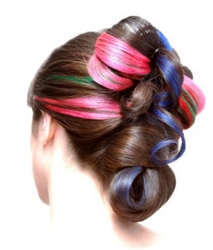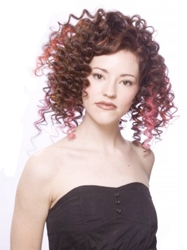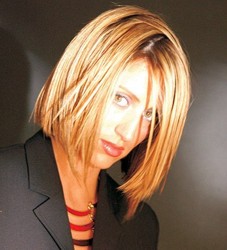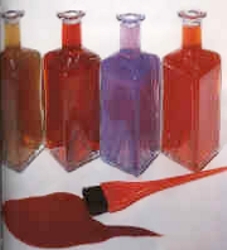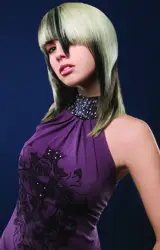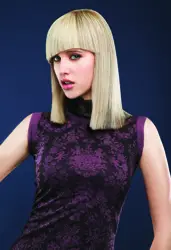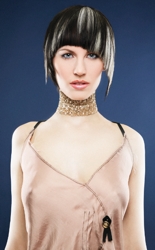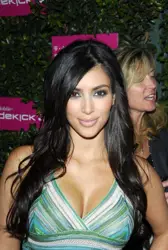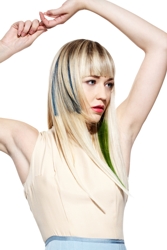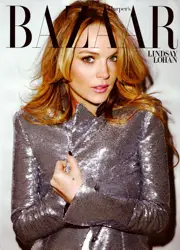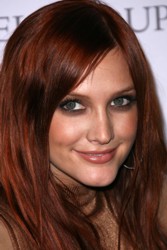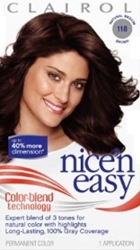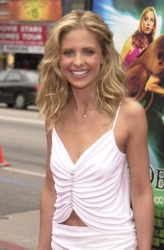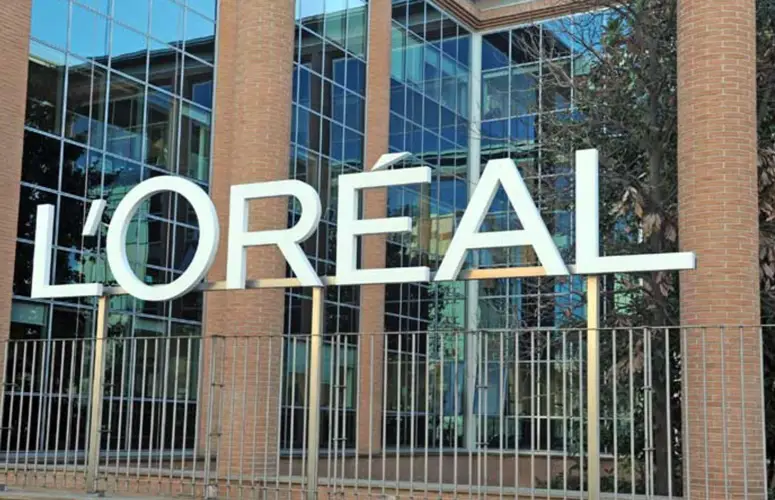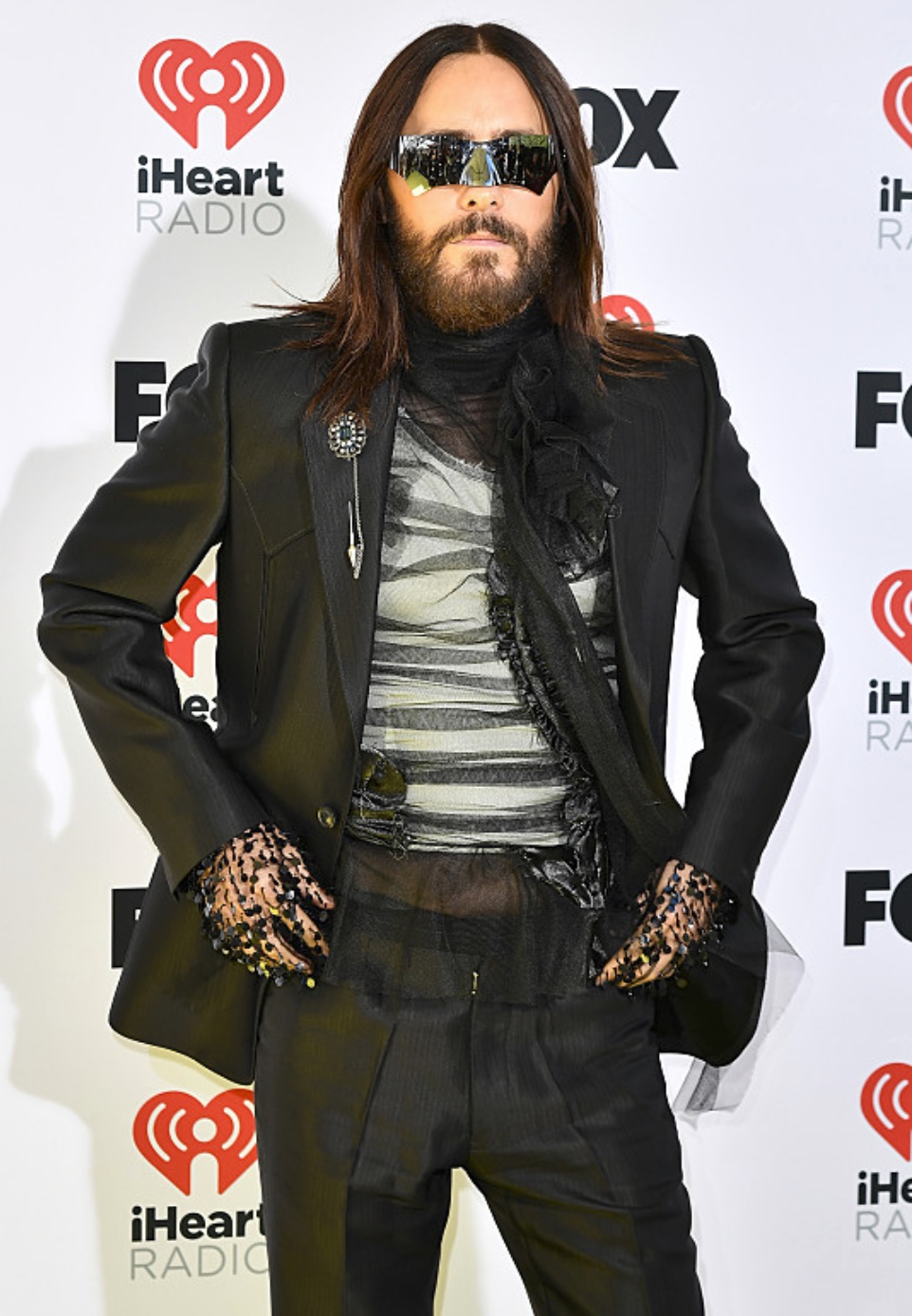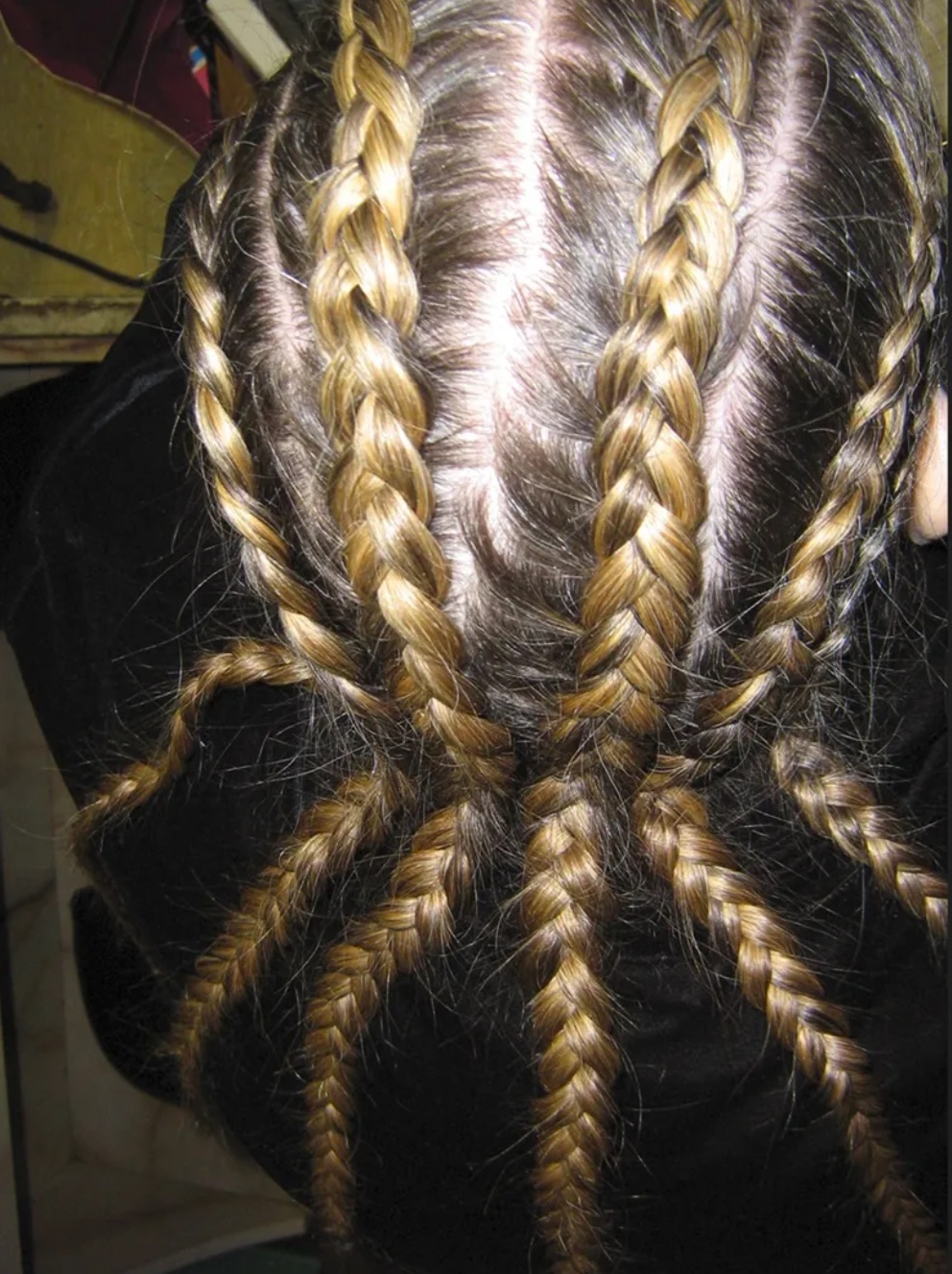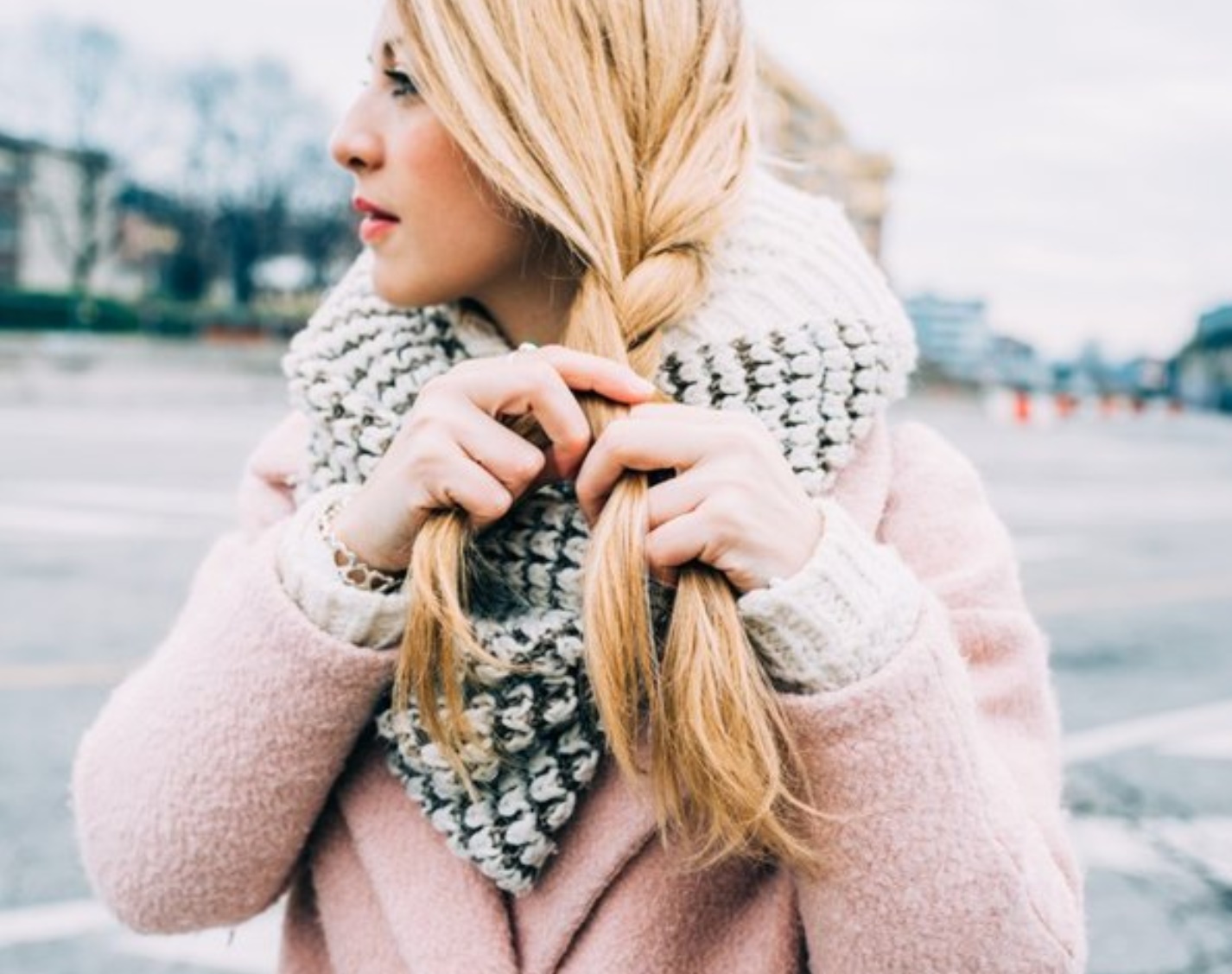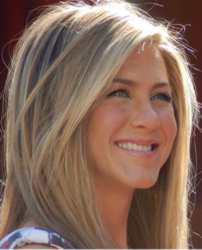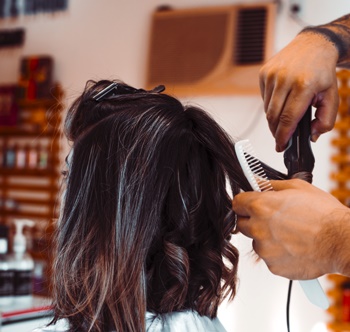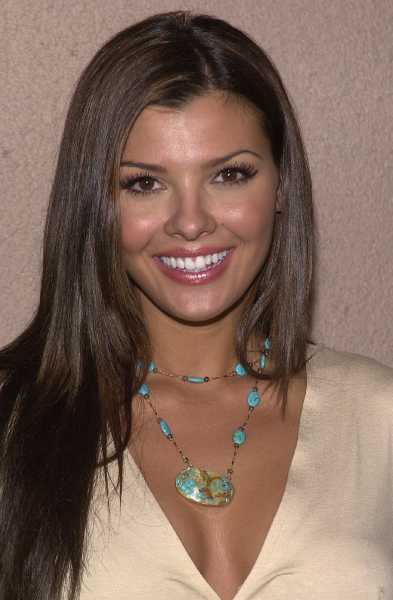
Hair Color Tips: Understanding Laws Of Haircolor
Introduction
Most unwanted hair color disasters are often due to the lack of understanding about the basic hair coloring "laws" and how they apply to coloring hair. This article (which is a classic and the very first of its kind on the Web since 2000) is not meant to be a thorough education in hair coloring, but a first step in helping home users of hair color to understand the basics. I will try not to get too technical, so follow along carefully and re-read any area that you are not sure about until you understand it thoroughly. Warning: This information is presented for your own judgment of suitability and use at the user's risk. No liability is assumed whatsoever by the author of this article or by HairBoutique.com. First Rule Of Color - Hair Color Is Not Hair PaintColor, as we perceive it, is actually the reflection of light off of the colored pigments in the hair shaft. This "reflection of light" is what we see as "color". The shade of color is made up of the different combinations of reflections of light off of the colored pigments. This is why hair color appears different under fluorescent lights than in natural sunlight, whether it's color from nature or from a bottle.
Levels - What They Are And How They Impact Hair Color
Levels are the degree of lightness or darkness of a color that is reflected or seen by the eye. Hair color is assigned a Level number ranging from1 to 10 with 1 being black and 10 lightest blonde. In other words, black reflects very little light and lightest blonde reflects the greatest amount of light. A level 10 blonde would be 'two steps lighter' than a level 8 blonde. This system of levels applies to all colors and almost all brands commonly found. Different Types of Hair ColorThere are several different types of hair color. Be sure to read this section carefully. Permanent Hair ColorPermanent is just what it means. This makes a permanent change in the pigment of the hair shaft. It does not wash out. It will fade in time, but cannot be simply removed to "bring back" your natural color. All hair that has been colored in this way has the natural color pigments irreversibly chemically altered. It can be removed, leaving the altered hair shaft pigments, which can be "corrective colored" back close to the original color. This is a job which should be left to the Pros Only. It can be one visit or many visits to the salon to try to correct a bad color job, it is expensive and is hard on the hair to varying degrees.
Single Process ColorSingle Process Color is the only color that should be attempted by the amateur. Single process means the color is lifted and deposited in one step. Semi-PermanentSemi-Permanent color is what it says it is, it can cover gray and go darker, but can not lighten. It lasts varying lengths of time depending on the product. Suitable for amateur colorists. Warning: Double Process (bleaching and toning to the desired color) should never be attempted by a home hair colorist! This is definitely a pro-only process. Deposit Only ColorDeposit Only color can only deposit color into the hair, there are many varieties on the market for the home user. These are very User Friendly and usually condition and color in one step. The very popular color glazes or translucent colors are among the easiest to start with to enhance your color. Most use a very low 3% peroxide to activate them. Some are capable of lifting or lightening one level. Professionally, Redken SHADES EQ is my favorite, bar none! Second Rule Of Color - Do Your Homework Before You ColorWhat does this mean? It means that you must be perfectly honest to yourself and about yourself and the factors that enter into hair coloring. If you are very dark haired (Level 1) and want to be a level 10 platinum blonde, forget home hair coloring!
Note: To read about hair color levels and pigments check out: Haircolor Basics: Hair Pigment Categories. This article explains hair color levels as well as hair pigment categories. I know that there are many lightening kits on the market that will lighten hair at home and there are beauty supply stores that will sell professional products to the public, but if you try this at home you're taking a big gamble. While it can be and is done every day by people, some get the results they wanted and some get horrible results. If you don't believe me, just go to any beauty supply that is open to the public, stand around the hair color section for a while and listen to the customer's comments. Or go to any mall or public place and just sit for a few minutes. Take a silent count of how many botched color jobs you see! My heart goes out to these people because most people who color their hair are trying to improve their appearance not detract from it! There is nothing that will lower your self esteem of yourself worse than having a bad hair day whether it is a bad cut, color or perm that lasts for months. Step #1: Select The Designed Color That You WantFirst you must select the desired color that you want to be. For example you may wish to be a medium warm blonde level 8. Now that you have determined where you want to be color wise, you have to find out where you are now. By "now" I mean first the 'level' (there's that level word again) and the tone of your hair, whether it has reddish or blonde undertones considered warm colors or ashen cool undertones.
Let's say you're a light ash brown level 6. Being a level 6 ash light brown means you have an absence of warm undertones in your hair now, but you may wish to both lighten and warm up the color to the desired level of an 8 warm blonde color. Doing The Math For Hair ColoringDon't panic when I say reddish or blonde undertones. Remember, I said that the color you see is a combination of colors reflecting off of the hair. Now you must do the math part of the homework. You must use a swatch book or ring to compare your hair color as it is now to match levels and tones in natural light if at all possible. Not what you perceive, think or what your Aunt Flo called your color when you were a kid!! Now that you know where you are now and where you are going, let's look at the following example of how to get there! Desired color-Warm Blonde Level = Level 8 Target color level X 2 = 16 Natural color-Light Ash Brown = Level 6 subtract this from target color level of 16 16-6=10 This gives you the number of levels to lift (= 2) and the level of color to use (=10). Note: If the total number for the level of color is 13 or larger, pre-lightening is required to achieve the desired color. You need to go off to a professional for double process coloring. How Hair Is Lightened
Since it has been established that the 'new' color is a combination of your old color level and tone (referred to as our 'base' color) and the new color that is deposited into the hair, you must take into account what happens when you lighten or lift the base color to another level and deposit the new pigments into the hair shaft. When hair is lightened it goes through several stages of lightening from the darkest to the lightest from a base of blue in the case of natural black to pale blonde with the palest of yellow as its base color. This lightening process fractures the color pigment creating undertones that are unwanted. Note: For general information on professional lightening products not to be used by home hair colorists check out: Haircolor Basics: Hair Lighteners and Hair Color Encylopedia - the page that has everything you want to know about hair color - professional, consumer or both. To correct this, the opposite color is added to the formula to "cancel" out the unwanted tones or other secondary colors are added in varying amounts to add special effects or customize the color to an individual's desire. Remember the color prism you were shown in grade school? It fractured light into distinct visible colors you could see. This is what you are doing with hair color except you are adding or subtracting colors to "correct or change from one color to another and change the undertones".
When hair is lightened it produces warm or red and yellow undertones. When red and yellow are mixed they produce orange. Where have you seen orange hair? Remember the scary trip to the mall or grocery store check out line? Now you know. Warning: Orange hair color is a real danger. Referring to the 'color wheel' you know that you want to cancel out some of the red/orange undertones to prevent the dreaded orange headed affliction of the mall, but yet leave enough to keep the warm tones. Since your natural color has a 'cool' base it will not turn as red/orange when lightened as a ' warm color' of the same level would. This is because that as the hair lightens on a warm color it adds to the reds and yellows that are already present. When lightening the same level of cool hair, it adds the missing reds and yellows to warm up the end resulting color. This can only be checked by doing a strand test. Always Do A Strand TestA strand test is the only reliable way to preview the new color. At this time adjustments can be made to the hair color formula to either add or subtract colors to enhance or cancel different undertones in the test strands. Don't be afraid of doing more than one test strand before doing overall color. Even more important, always do it on uncolored hair. The length of time that the color mixture is left on can also be varied to change results. Always thoroughly dry the test strand to check for proper color and breakage/damage. Warning: Do not attempt to color hair that has had henna or metallic dyes used on it.
Tips Before ColoringBefore coloring it's best to practice sectioning off thin parts of hair 1/4 to 1/2 inch in width depending on the density of the hair. Apply conditioner to your hair a few days before doing the actual coloring to get the hang of handling a hair color applicator bottle. In the case of thick long hair, get a friend to help. A clarifying treatment to remove buildup in the hair should always be done before coloring. Always follow the manufacturer's instructions. On long hair, the ends are always more porous than the rest. Apply color to the mid lengths from about 1 inch from the scalp and apply the color to the ends as the last step. Follow this procedure because the scalp will process faster due to the heat of the body and the insulating effect of long hair on the scalp. Here there is no help like experience. Even just doing the test strands or working on your friends will teach an amateur colorist a lot if you will be observant and patient. Very thick, long hair, may have to be colored in sections, rinsed and the uncolored hair dried to allow color to be applied to the rest. Be sure not to re-color already colored hair and observe timing exactly. Study The Color Wheel!
I don't expect the amateur colorist to soak all of this information up in one session. You should read this article carefully and use it as a guide to understanding the key relationships between cool and warm colors. You can also use this article as a guide to learn how to determine color levels in the products you use. It can also help you understand tonal families to use as accents or to suppress unwanted tones. Happy Coloring! About WilliamWhat can I tell you about William? I know that he is a professional that has been working with color for a very long time. I can also tell you that his business is based mostly on long hair, which he enjoys working on. William sent me this fantastic article on hair color as a special New Year's gift to the HairBoutique.com. I was amazed at his incredible knowledge of hair and color. I want to make a special point of thanking William for taking time out of his busy life to share his wisdom with all of us at HairBoutique.com. I am sure that William will save many from orange hair. This article was first published in 1999, but has been updated every year since to include additional information. - Revised Publication Date: 12/04/11
| ||||||||||||||||||||||||||||||||||||
| Send this page to a friend.. | ||||||||||||||||||||||||||||||||||||
| If you want to talk more about this or other hair care articles on HairBoutique.com or anywhere else, please post a message on HairBoutique.com's Hair Talk Forums.
Copyright 1999 - 2010 by William & HairBoutique.com. All rights reserved. |
Social Media Network Information
Please follow us on Twitter at: https://Twitter.com/HairBoutique. I look forward to meeting new people from all walks of Twitter and learning from their Tweets.


